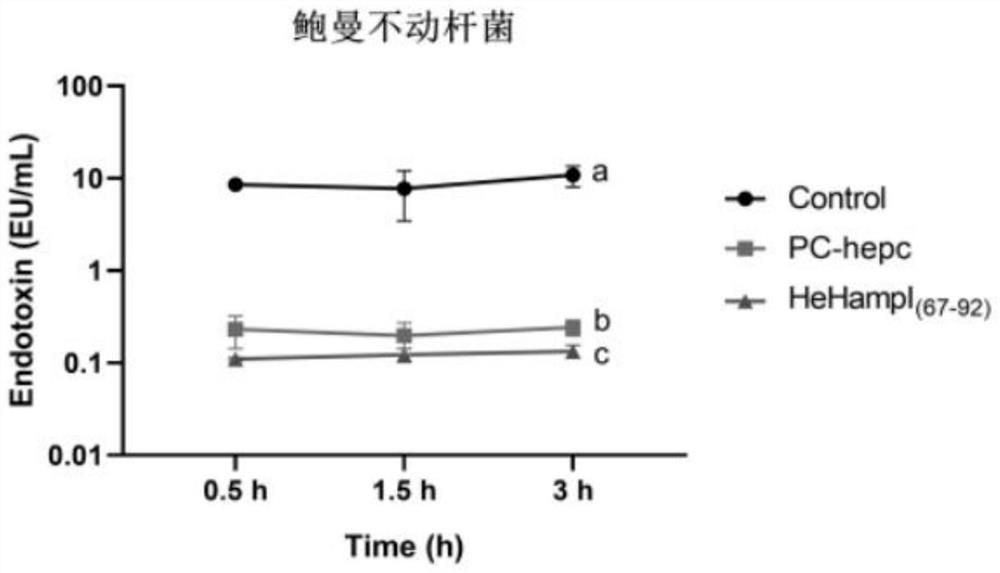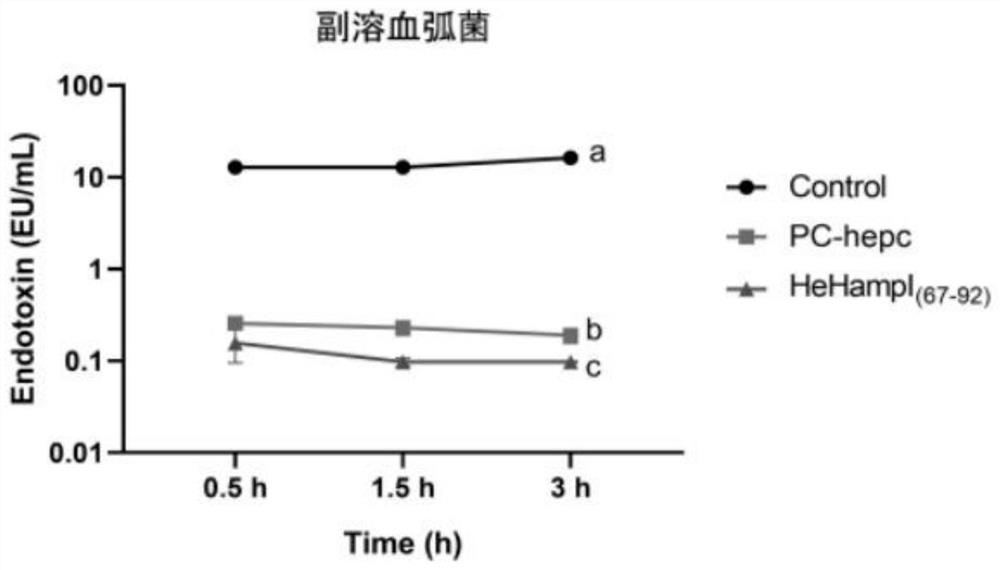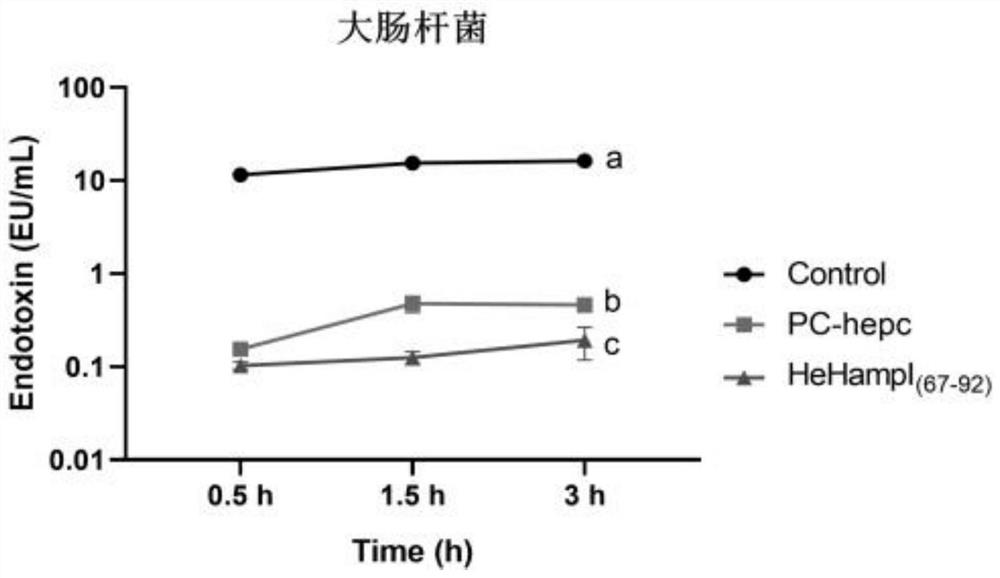A kind of antimicrobial peptide hehampⅰ(67-92) and its application
An antibacterial peptide and nucleic acid technology, applied in the application, antibacterial, antifungal and other directions, can solve the problems of eukaryotic cell hemolysis, natural antibacterial peptide toxicity, narrow antibacterial spectrum of antibacterial peptide, etc. Broad spectrum effect
- Summary
- Abstract
- Description
- Claims
- Application Information
AI Technical Summary
Problems solved by technology
Method used
Image
Examples
Embodiment 1
[0020] Example 1 Determination of the sequence of the striated hippocampal antimicrobial peptide hepcidin (HeHamp Ⅰ)
[0021] Based on the linear hippocampus genome and transcriptome database, the present invention screens and obtains the cDNA sequence of HeHamp I, and clones and obtains the antimicrobial peptide sequence from the linear hippocampal tissue. The specific steps are as follows:
[0022] Total RNA was extracted from adult male hippocampal liver tissue using TRIzol reagent (Invitrogen, Waltham, MA, USA) according to its attached instructions. Using the ReverAce qPCR RT Master Mix with gDNA Remover (Toyobo, Osaka, Japan) kit, 1 microgram of total RNA was used for cDNA first-strand synthesis. Primer 5.00 (Palo Alto, CA) was used to design the gene-specific primers F, R (F: 5'-ATGAAGGCATTCAGCATTGC-3'; R: 5'-TCAGAACTTGCAGCACAAGC-3') to amplify the open reading frame of HeHampⅠ (ORF). In this study, the PCR reaction follows the following cycle parameters: 95°C for 5mi...
Embodiment 2
[0023] Example 2 Detection of the biological activity of the mature peptide of the striated hippocampus antimicrobial peptide hepcidin (HeHamp Ⅰ)
[0024] Synthesis of HeHamp Ⅰ Mature Peptide
[0025] The amino acid sequence of the mature peptide HeHamp I (67-92) is: QSNLSVCYWCCKCCRSYKGCGLCCKF, or as shown in SEQ ID NO:1. It was synthesized by GenScript Biotechnology Company (Nanjing, China) by solid-phase peptide synthesis. The molecular mass and purity of the synthetic peptide were 2.986kD and 95.7%, respectively. Synthetic peptides were stored as dry powder at -80°C until use.
[0026] Microbial agglutination test
[0027] Gram-negative bacteria used in the agglutination test: Vibrio parahaemolyticus, Vibrio harveyi, Escherichia coli, multidrug-resistant Escherichia coli, Acinetobacter baumannii, resistant strains of Acinetobacter baumannii, Klebsiella pneumoniae, Salmonella typhimurium; Gram-positive bacteria: Bacillus thuringiensis, Micrococcus luteus, Staphylococcus ...
Embodiment 3
[0032] Example 3 Bacterial endotoxin inhibition experiment
[0033] The reagents and consumables used in this experiment are sterile and free of endotoxin.
[0034] Incubate Escherichia coli, Acinetobacter baumannii and Vibrio parahaemolyticus overnight at the optimum temperature and collect the cells, wash 3 times with 1×PBS, and resuspend to 1×10 5 cfu mL -1. The experimental group was: synthetic peptide mixed with bacterial solution in equal volume (when dealing with Escherichia coli and Vibrio parahaemolyticus, the final concentration of protein in the mixture of protein and bacterial solution was 6 μM; The final concentration of the protein was 6 μM in the mixed solution of the liquid); the control group was: the protein solvent (DMSO solution with a volume ratio of 1 / 1000) was mixed with the bacterial solution in equal volumes, and the mature peptide of large yellow croaker hepcidin (PC- hepc) as a reference, with three replicates in each group. At room temperature, ...
PUM
 Login to View More
Login to View More Abstract
Description
Claims
Application Information
 Login to View More
Login to View More - R&D
- Intellectual Property
- Life Sciences
- Materials
- Tech Scout
- Unparalleled Data Quality
- Higher Quality Content
- 60% Fewer Hallucinations
Browse by: Latest US Patents, China's latest patents, Technical Efficacy Thesaurus, Application Domain, Technology Topic, Popular Technical Reports.
© 2025 PatSnap. All rights reserved.Legal|Privacy policy|Modern Slavery Act Transparency Statement|Sitemap|About US| Contact US: help@patsnap.com



